Full text
PDF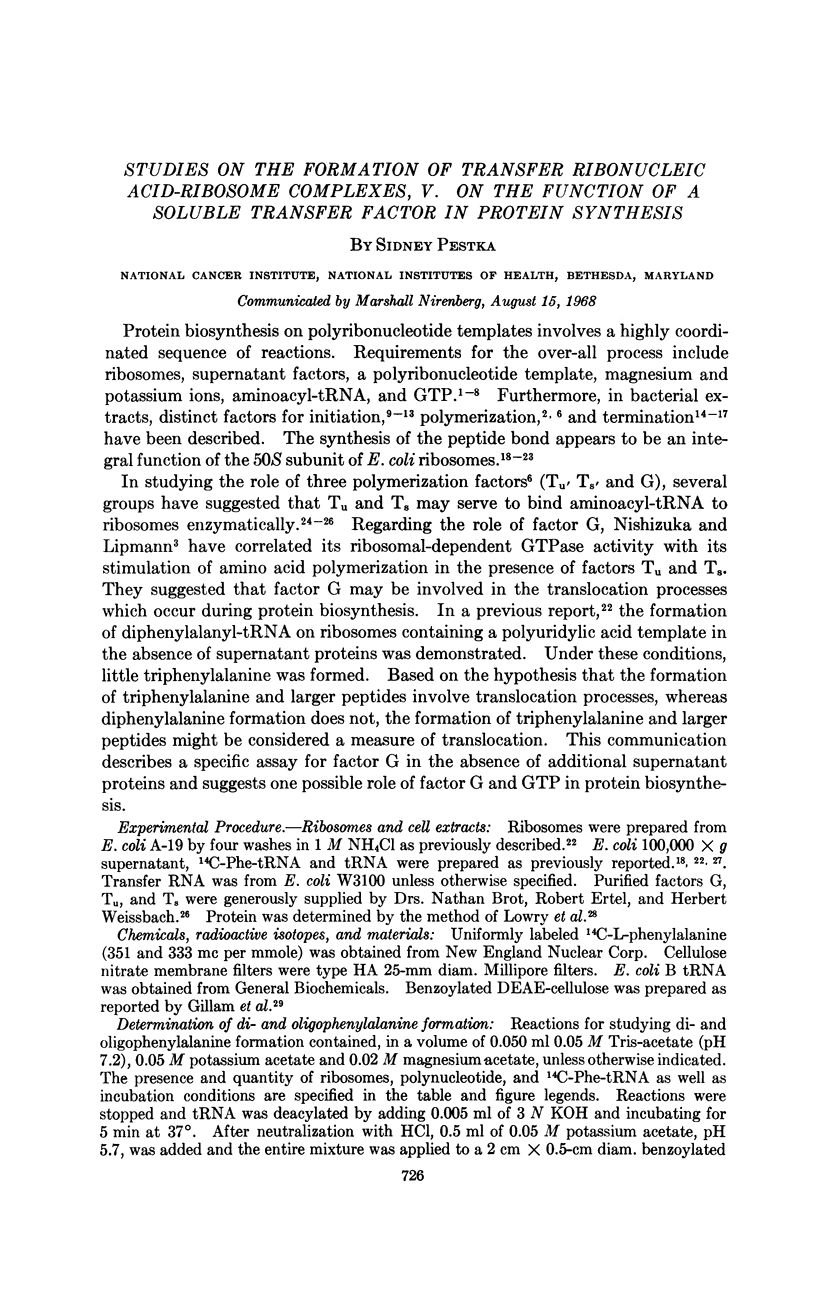
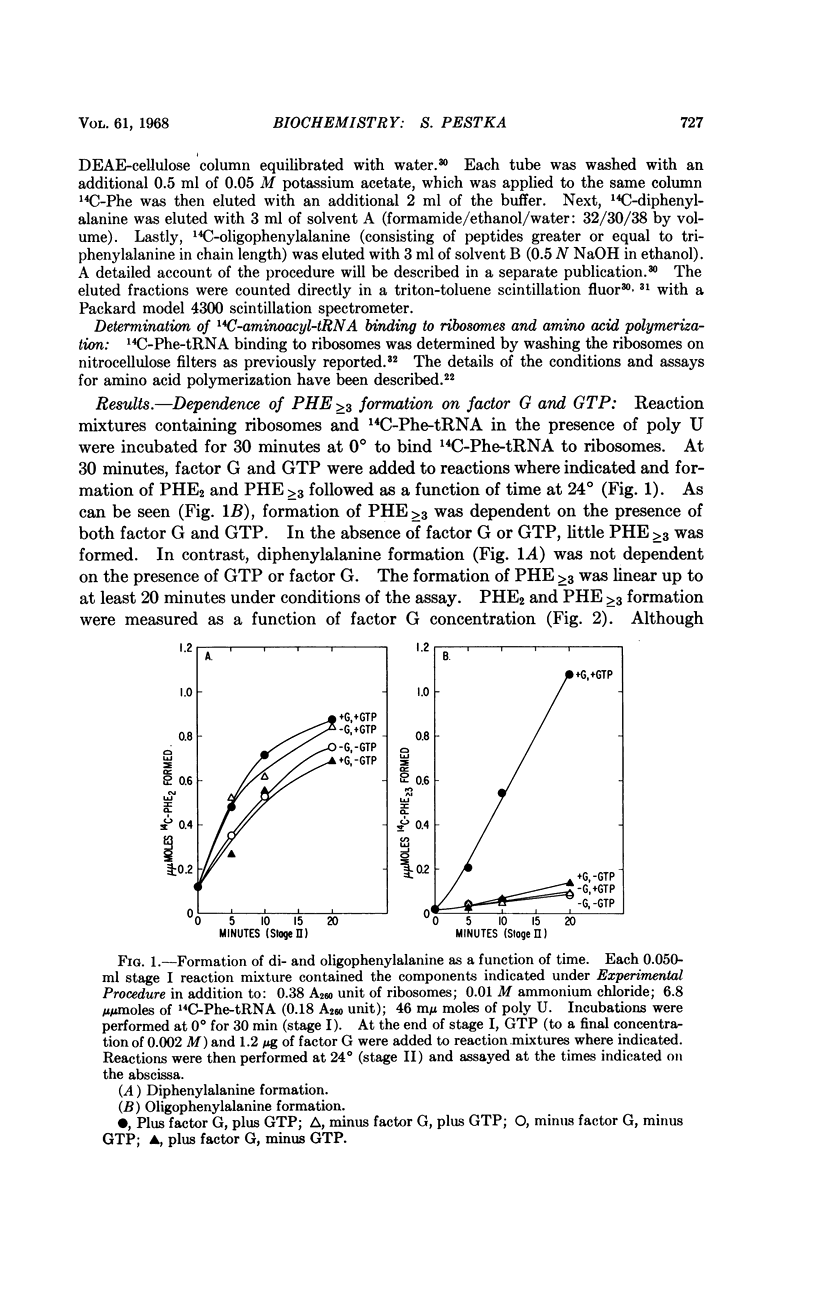
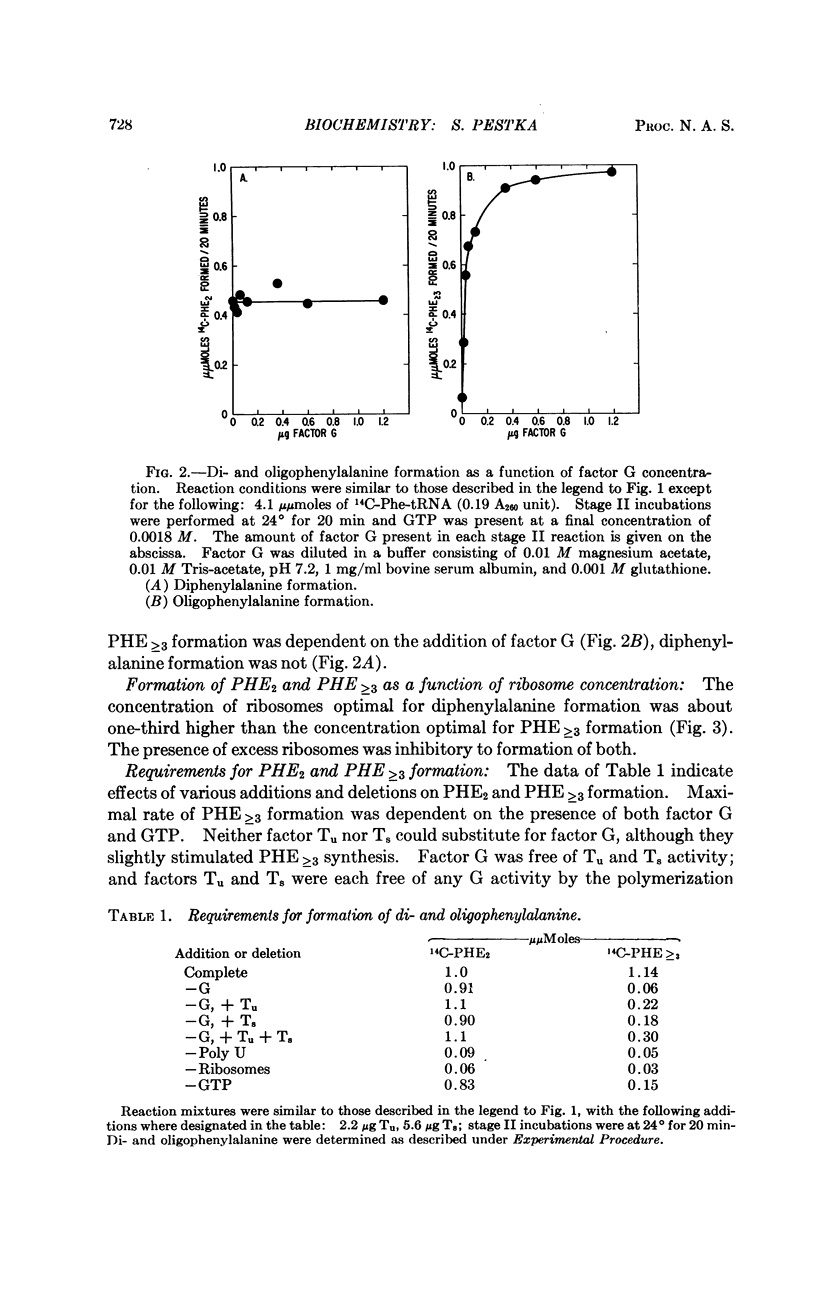
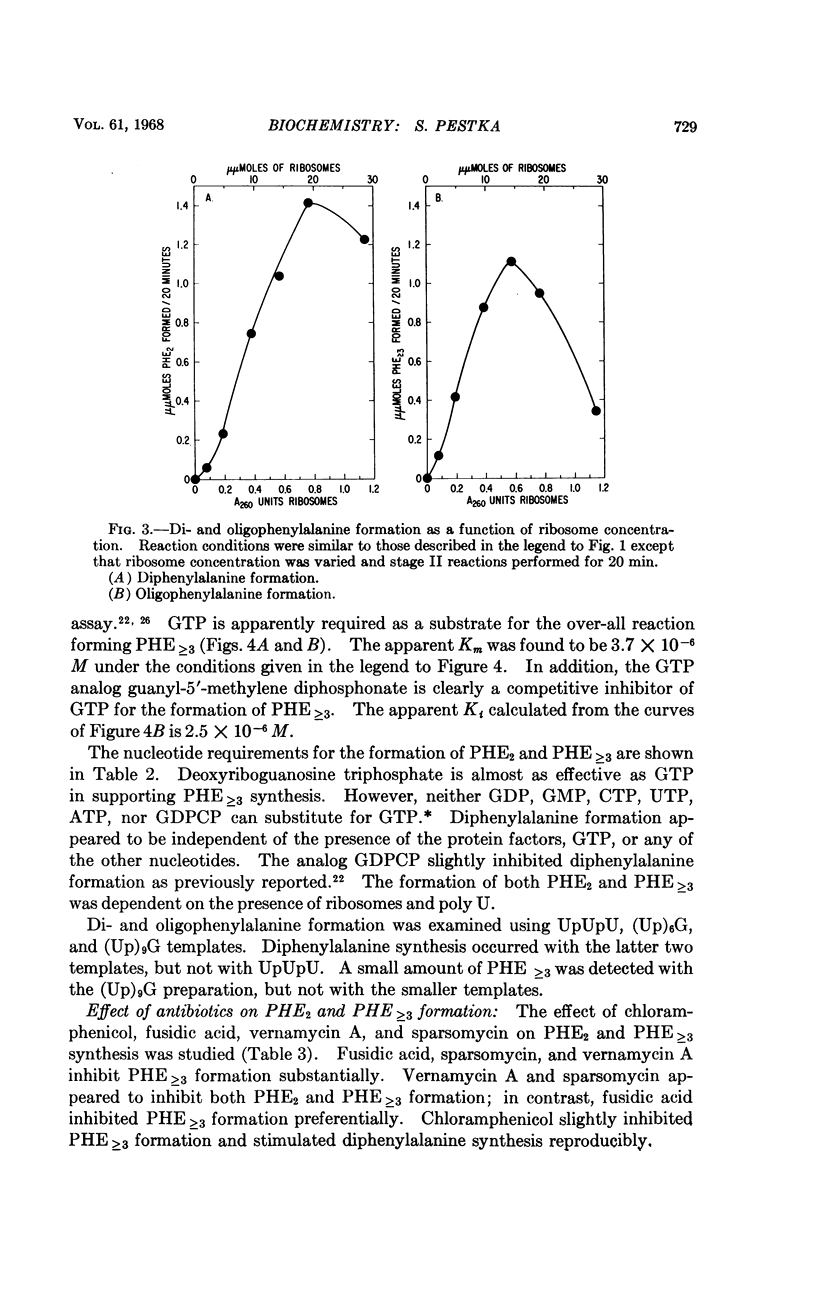
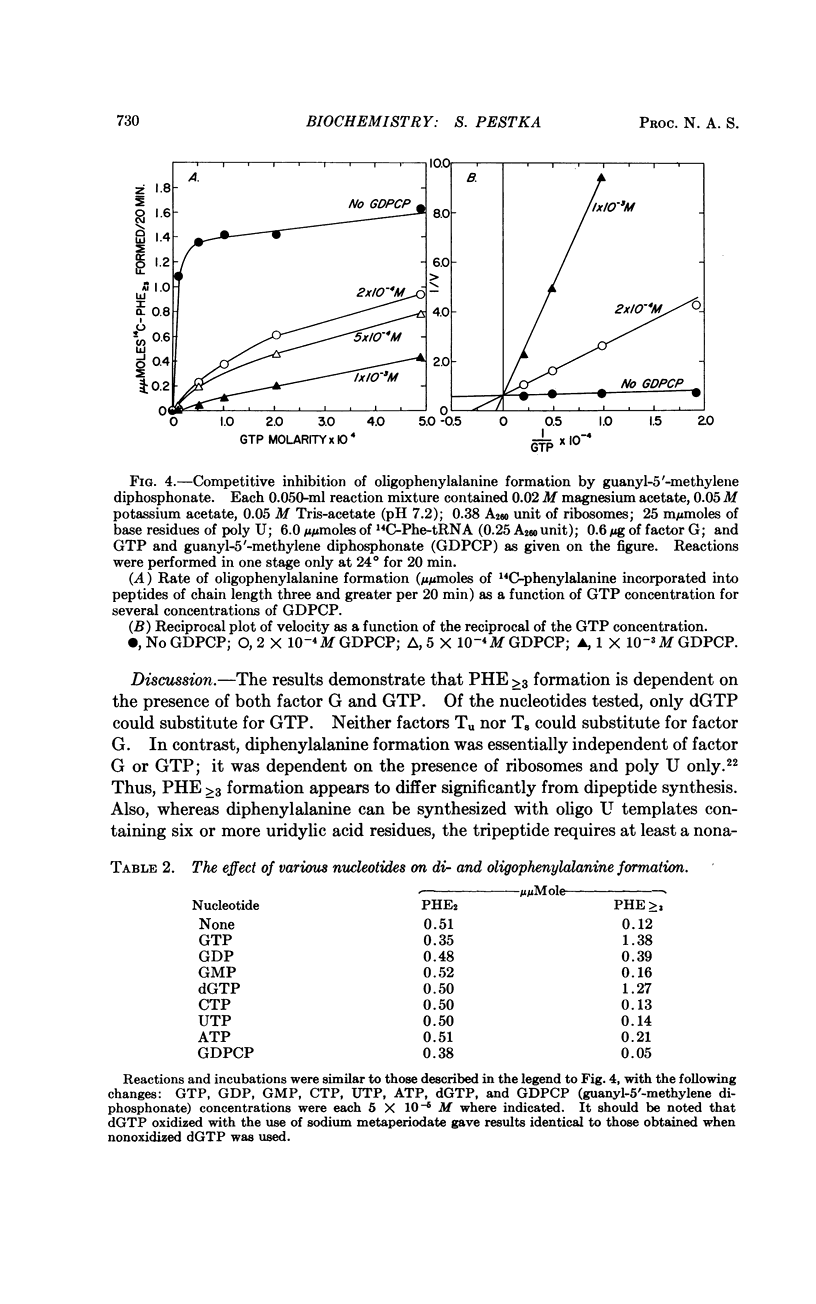
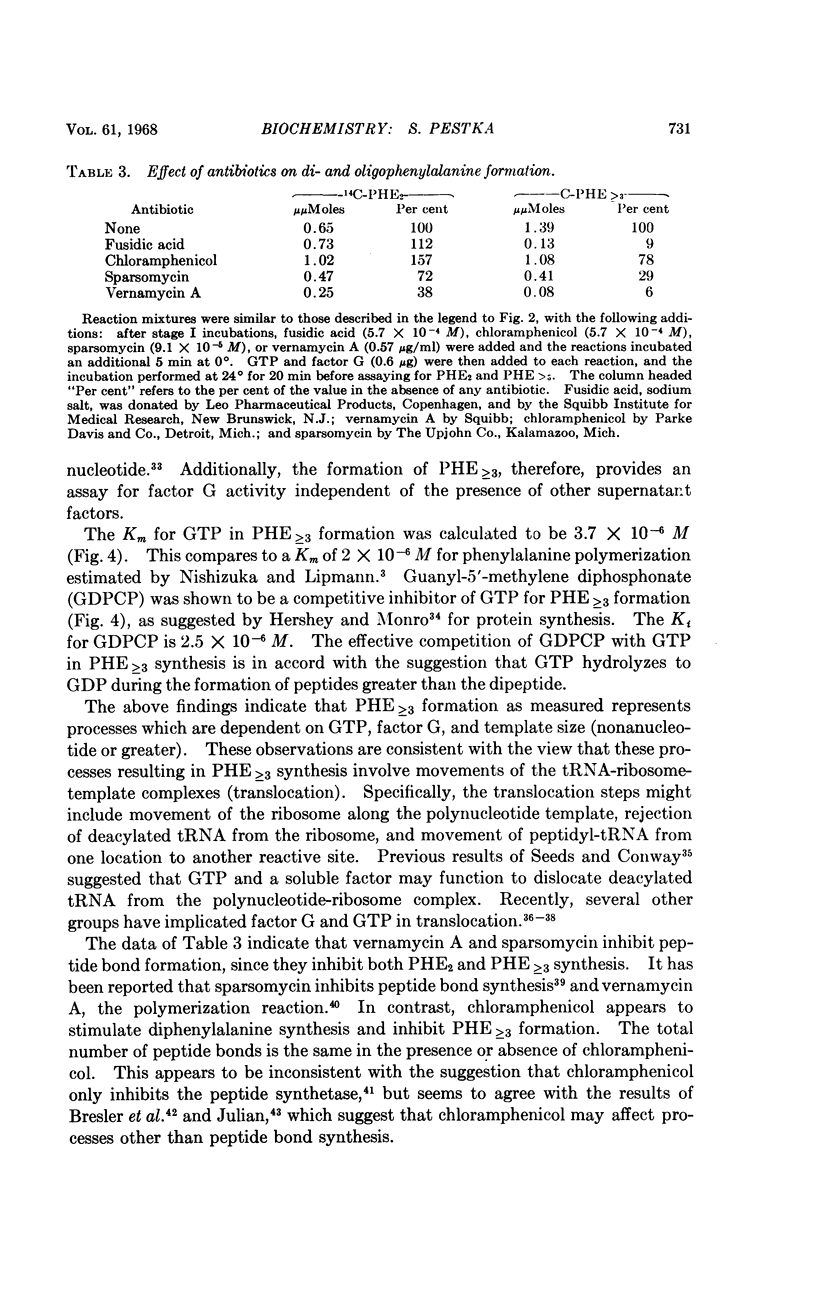
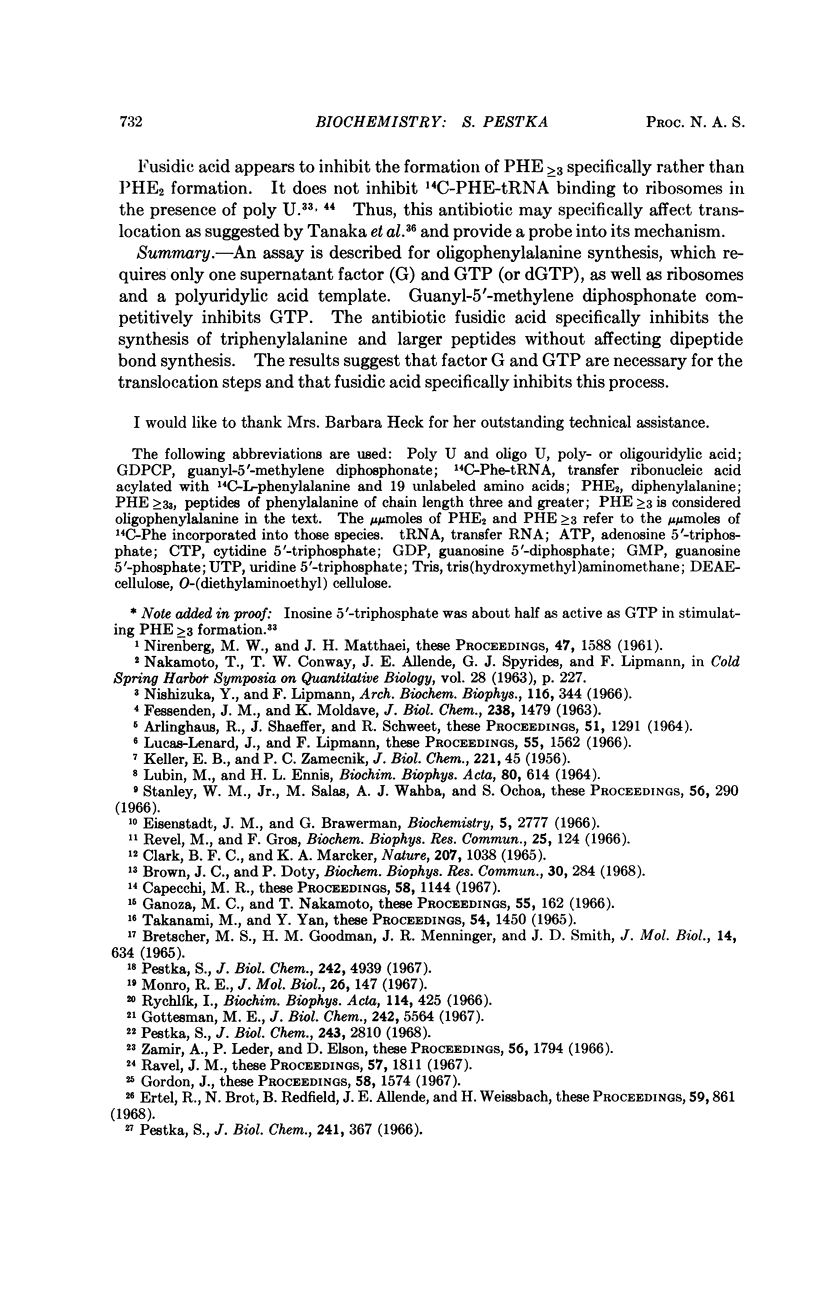
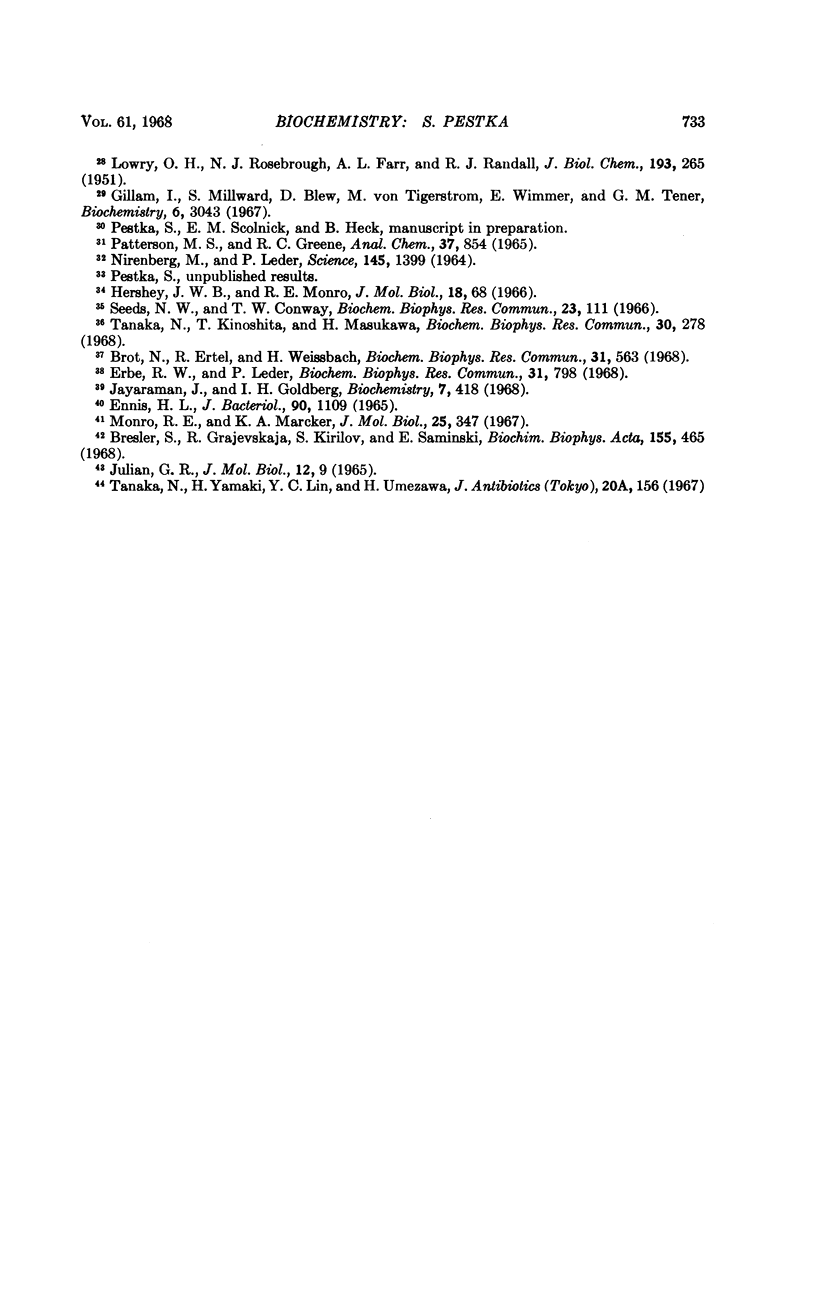
Selected References
These references are in PubMed. This may not be the complete list of references from this article.
- ARLINGHAUS R., SHAEFER J., SCHWEET R. MECHANISM OF PEPTIDE BOND FORMATION IN POLYPEPTIDE SYNTHESIS. Proc Natl Acad Sci U S A. 1964 Jun;51:1291–1299. doi: 10.1073/pnas.51.6.1291. [DOI] [PMC free article] [PubMed] [Google Scholar]
- Bresler S., Grajevskaja R., Kirilov S., Saminski E. Stability of peptidyl-tRNA - the intermediate of protein synthesis. Biochim Biophys Acta. 1968 Feb 26;155(2):465–475. doi: 10.1016/0005-2787(68)90192-5. [DOI] [PubMed] [Google Scholar]
- Bretscher M. S., Goodman H. M., Menninger J. R., Smith J. D. Polypeptide chain termination using synthetic polynucleotides. J Mol Biol. 1965 Dec;14(2):634–639. doi: 10.1016/s0022-2836(65)80219-4. [DOI] [PubMed] [Google Scholar]
- Brot N., Ertel R., Weissbach H. Effect of a soluble transfer factor on the reaction of aminoacyl-tRNA with puromycin. Biochem Biophys Res Commun. 1968 May 23;31(4):563–570. doi: 10.1016/0006-291x(68)90515-9. [DOI] [PubMed] [Google Scholar]
- Brown J. C., Doty P. Protein factor requirement for binding of messenger RNA to ribosomes. Biochem Biophys Res Commun. 1968 Feb 15;30(3):284–291. doi: 10.1016/0006-291x(68)90448-8. [DOI] [PubMed] [Google Scholar]
- Capecchi M. R. Polypeptide chain termination in vitro: isolation of a release factor. Proc Natl Acad Sci U S A. 1967 Sep;58(3):1144–1151. doi: 10.1073/pnas.58.3.1144. [DOI] [PMC free article] [PubMed] [Google Scholar]
- Clark F. C., Marcker K. A. Coding response of N-fromyl-methionyl-sRNA to UUG. Nature. 1965 Sep 4;207(5001):1038–1039. doi: 10.1038/2071038b0. [DOI] [PubMed] [Google Scholar]
- Eisenstadt J. M., Brawerman G. A factor from Escherichia coli concerned with the stimulation of cell-free polypeptide synthesis by exogenous ribonucleic acid. I. Evidence for the occurrence of a stimulation factor. Biochemistry. 1966 Sep;5(9):2777–2783. doi: 10.1021/bi00873a001. [DOI] [PubMed] [Google Scholar]
- Ennis H. L. Inhibition of protein synthesis by polypeptide antibiotics.. II. In vitro protein synthesis. J Bacteriol. 1965 Oct;90(4):1109–1119. doi: 10.1128/jb.90.4.1109-1119.1965. [DOI] [PMC free article] [PubMed] [Google Scholar]
- Erbe R. W., Leder P. Initiation and protein synthesis: translation of di- and tri-codon messengers. Biochem Biophys Res Commun. 1968 Jun 10;31(5):798–803. doi: 10.1016/0006-291x(68)90633-5. [DOI] [PubMed] [Google Scholar]
- Ertel R., Brot N., Redfield B., Allende J. E., Weissbach H. Binding of guanosine 5'-triphosphate by soluble factors required for polypeptide synthesis. Proc Natl Acad Sci U S A. 1968 Mar;59(3):861–868. doi: 10.1073/pnas.59.3.861. [DOI] [PMC free article] [PubMed] [Google Scholar]
- FESSENDEN J. M., MOLDAVE K. Studies on aminoacyl transfer from soluble ribonucleic acid to ribosomes. Resolution of two soluble transferring activities. J Biol Chem. 1963 Apr;238:1479–1484. [PubMed] [Google Scholar]
- Ganoza M. C., Nakamoto T. Studies on the mechanism of polypeptide chain termination in cell-free extracts of E. coli. Proc Natl Acad Sci U S A. 1966 Jan;55(1):162–169. doi: 10.1073/pnas.55.1.162. [DOI] [PMC free article] [PubMed] [Google Scholar]
- Gillam I., Millward S., Blew D., von Tigerstrom M., Wimmer E., Tener G. M. The separation of soluble ribonucleic acids on benzoylated diethylaminoethylcellulose. Biochemistry. 1967 Oct;6(10):3043–3056. doi: 10.1021/bi00862a011. [DOI] [PubMed] [Google Scholar]
- Gordon J. Interaction of guanosine 5'-triphosphate with a supernatant fraction from E. coli and aminoacyl-sRNA. Proc Natl Acad Sci U S A. 1967 Oct;58(4):1574–1578. doi: 10.1073/pnas.58.4.1574. [DOI] [PMC free article] [PubMed] [Google Scholar]
- Gottesman M. E. Reaction of ribosome-bound peptidyl transfer ribonucleic acid with aminoacyl transfer ribonucleic acid or puromycin. J Biol Chem. 1967 Dec 10;242(23):5564–5571. [PubMed] [Google Scholar]
- Hershey J. W., Monro R. E. A competitive inhibitor of the GTP reaction in protein synthesis. J Mol Biol. 1966 Jun;18(1):68–76. doi: 10.1016/s0022-2836(66)80077-3. [DOI] [PubMed] [Google Scholar]
- JULIAN G. R. (14C)LYSINE PEPTIDES SYNTHESIZED IN AN IN VITRO ESCHERICHIA COLI SYSTEM IN THE PRESENCE OF CHLORAMPHENICOL. J Mol Biol. 1965 May;12:9–16. doi: 10.1016/s0022-2836(65)80277-7. [DOI] [PubMed] [Google Scholar]
- Jayaraman J., Goldberg I. H. Localization of sparsomycin action to the peptide-bond-forming step. Biochemistry. 1968 Jan;7(1):418–421. doi: 10.1021/bi00841a053. [DOI] [PubMed] [Google Scholar]
- KELLER E. B., ZAMECNIK P. C. The effect of guanosine diphosphate and triphosphate on the incorporation of labeled amino acids into proteins. J Biol Chem. 1956 Jul;221(1):45–59. [PubMed] [Google Scholar]
- LOWRY O. H., ROSEBROUGH N. J., FARR A. L., RANDALL R. J. Protein measurement with the Folin phenol reagent. J Biol Chem. 1951 Nov;193(1):265–275. [PubMed] [Google Scholar]
- LUBIN M., ENNIS H. L. ON THE ROLE OF INTRACELLULAR POTASSIUM IN PROTEIN SYNTHESIS. Biochim Biophys Acta. 1964 Apr 27;80:614–631. doi: 10.1016/0926-6550(64)90306-8. [DOI] [PubMed] [Google Scholar]
- Lucas-Lenard J., Lipmann F. Separation of three microbial amino acid polymerization factors. Proc Natl Acad Sci U S A. 1966 Jun;55(6):1562–1566. doi: 10.1073/pnas.55.6.1562. [DOI] [PMC free article] [PubMed] [Google Scholar]
- Monro R. E. Catalysis of peptide bond formation by 50 S ribosomal subunits from Escherichia coli. J Mol Biol. 1967 May 28;26(1):147–151. doi: 10.1016/0022-2836(67)90271-9. [DOI] [PubMed] [Google Scholar]
- Monro R. E., Marcker K. A. Ribosome-catalysed reaction of puromycin with a formylmethionine-containing oligonucleotide. J Mol Biol. 1967 Apr 28;25(2):347–350. doi: 10.1016/0022-2836(67)90146-5. [DOI] [PubMed] [Google Scholar]
- NIRENBERG M. W., MATTHAEI J. H. The dependence of cell-free protein synthesis in E. coli upon naturally occurring or synthetic polyribonucleotides. Proc Natl Acad Sci U S A. 1961 Oct 15;47:1588–1602. doi: 10.1073/pnas.47.10.1588. [DOI] [PMC free article] [PubMed] [Google Scholar]
- NIRENBERG M., LEDER P. RNA CODEWORDS AND PROTEIN SYNTHESIS. THE EFFECT OF TRINUCLEOTIDES UPON THE BINDING OF SRNA TO RIBOSOMES. Science. 1964 Sep 25;145(3639):1399–1407. doi: 10.1126/science.145.3639.1399. [DOI] [PubMed] [Google Scholar]
- Nishizuka Y., Lipmann F. The interrelationship between guanosine triphosphatase and amino acid polymerization. Arch Biochem Biophys. 1966 Sep 26;116(1):344–351. doi: 10.1016/0003-9861(66)90040-3. [DOI] [PubMed] [Google Scholar]
- PATTERSON M. S., GREENE R. C. MEASUREMENT OF LOW ENERGY BETA-EMITTERS IN AQUEOUS SOLUTION BY LIQUID SCINTILLATION COUNTING OF EMULSIONS. Anal Chem. 1965 Jun;37:854–857. doi: 10.1021/ac60226a017. [DOI] [PubMed] [Google Scholar]
- Pestka S. Studies on the formation of transfer ribonucleic acid-ribosome complexes. 3. The formation of peptide bonds by ribosomes in the absence of supernatant enzymes. J Biol Chem. 1968 May 25;243(10):2810–2820. [PubMed] [Google Scholar]
- Pestka S. Studies on the formation of transfer ribonucleic acid-ribosome complexes. I. The effect of streptomycin and ribosomal dissociation on 14-C-aminoacyl transfer ribonucleic acid binding to ribosomes. J Biol Chem. 1966 Jan 25;241(2):367–372. [PubMed] [Google Scholar]
- Pestka S. Studies on the formation of transfer ribonucleic acid-ribosome complexes. II. A possible site on the 50 S subunit protecting aminoacyl transfer ribonucleic acid from deacylation. J Biol Chem. 1967 Nov 10;242(21):4939–4947. [PubMed] [Google Scholar]
- Ravel J. M. Demonstration of a guanosine triphosphate-dependent enzymatic binding of aminoacyl-ribonucleic acid to Escherichia coli ribosomes. Proc Natl Acad Sci U S A. 1967 Jun;57(6):1811–1816. doi: 10.1073/pnas.57.6.1811. [DOI] [PMC free article] [PubMed] [Google Scholar]
- Revel M., Gros F. A factor from E. coli required for the translation of natural messenger RNA. Biochem Biophys Res Commun. 1966 Oct 5;25(1):124–132. doi: 10.1016/0006-291x(66)90649-8. [DOI] [PubMed] [Google Scholar]
- Rychlík I. Release of lysine peptides by puromycin from polylysyl-transfer ribonucleic acid in the presence of ribosomes. Biochim Biophys Acta. 1966 Feb 21;114(2):425–427. doi: 10.1016/0005-2787(66)90327-3. [DOI] [PubMed] [Google Scholar]
- Seeds N. W., Conway T. W. Reversal by GTP of soluble RNA inhibition of polyphenylalanine synthesis. Biochem Biophys Res Commun. 1966 Apr 19;23(2):111–116. doi: 10.1016/0006-291x(66)90513-4. [DOI] [PubMed] [Google Scholar]
- Stanley W. M., Jr, Salas M., Wahba A. J., Ochoa S. Translation of the genetic message: factors involved in the initiation of protein synthesis. Proc Natl Acad Sci U S A. 1966 Jul;56(1):290–295. doi: 10.1073/pnas.56.1.290. [DOI] [PMC free article] [PubMed] [Google Scholar]
- Takanami M., Yan Y. The release of polypeptide chains from ribosomes in cell-free amino acid-incorporating systems by specific combinations of bases in synthetic polyribonucleotides. Proc Natl Acad Sci U S A. 1965 Nov;54(5):1450–1458. doi: 10.1073/pnas.54.5.1450. [DOI] [PMC free article] [PubMed] [Google Scholar]
- Tanaka N., Kinoshita T., Masukawa H. Mechanism of protein synthesis inhibition by fusidic acid and related antibiotics. Biochem Biophys Res Commun. 1968 Feb 15;30(3):278–283. doi: 10.1016/0006-291x(68)90447-6. [DOI] [PubMed] [Google Scholar]
- Zamir A., Leder P., Elson D. A ribosome-catalyzed reaction between N-formylmethionyl-trna and puromycin. Proc Natl Acad Sci U S A. 1966 Dec;56(6):1794–1801. doi: 10.1073/pnas.56.6.1794. [DOI] [PMC free article] [PubMed] [Google Scholar]


